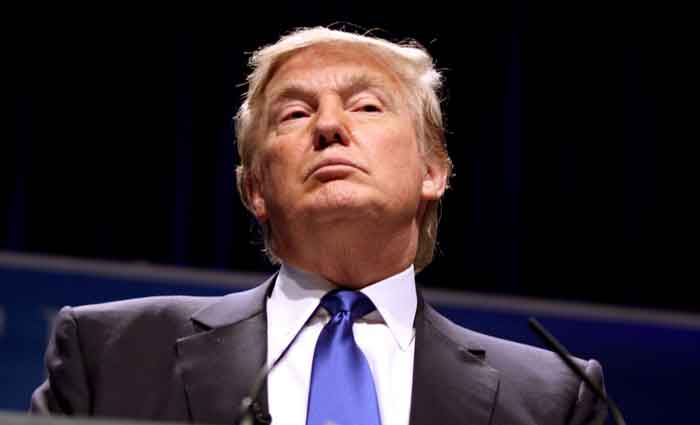Trump effect soon to be felt in Asia
GUEST OBSERVER
Yep, it happened. And now that the dust is settling, the challenges for Asia are becoming more evident. In sum, 2017 looks like it’ll be the most difficult for the region since 2009. It’s not, of course, entirely the President-elect’s fault – his administration, after all, hasn’t even outlined a detailed policy agenda yet, let alone taken the reins of power.
Plus, Asia’s travails are partly self-inflicted. Still, if the past few weeks are any indication, things are bound to get a lot tougher. Trade is one thing, with exports already struggling and little prospect for a policy-driven rebound. The bigger issue, though, is the dollar and rates. Financial conditions are tightening across the region, putting a squeeze on domestic demand. It’ll get bumpier, still.
As impressive as the rebound from the Global Financial Crisis has been, Asia has over recent years merely limped along. The taper tantrum of 2013 was a wake-up call, but the region managed to hit the snooze button for a little while longer, avoiding outright financial stress.
But growth continued to decelerate, with exports in particular struggling to make meaningful headways since late 2014 and debt saturation weighing on local demand. It’s tempting to think that the latest market gyrations will pass, too, without more substantial harm. But, with every iteration, prospects dim further.
Start with exports. These, as noted, have struggled for some time now. A combination of factors is to blame, including weak capex the world over, the commodity investment slump, creeping protectionism (or at least the absence of major trade liberalization over the past decade), supply chain disintegration, and an expenditure shift towards services.
The question for 2017 is whether exports will at last rebound. We have our doubts. An acceleration in US growth should help. Yet this may be offset by continued sluggish demand elsewhere in the world, not least in emerging markets.
The Trump administration may also help spur a recovery in US private capex, via deregulation and other, purportedly more business friendly policies. Yet it will take time before the full impact is felt, leaving this to be, presumably, more of a story for 2018 and beyond.
Key to watch will be a deal with Congress to repatriate offshore cash holding by US companies, but it’s not clear that this in itself will send capex soaring if record-low rates previously failed to do so. A promised 1 trillion US dollar infrastructure push could help as well, if this will ever be passed by Congress in its entirety. But again: this too, will stretch out over many years.
At the same time, a Trump administration may adopt a more protectionist stance. True, details aren’t available yet, apart from some vague talk about punitive action and the promise to shelve the TPP.
This, no doubt, will restrain exports, even if the impact will likely be more industry specific. But note that uncertainty over trade policy in itself will promptly weigh on growth in Asia by curtailing investment (why invest in further capacity if it remains unclear that the resulting goods can be sold?). In this sense, a pick-up in US capex would partly come at the expense of investment spending in Asia.
It’s hard to see, therefore, a meaningful revival in Asia trade for the foreseeable future.
However, the bigger issues, at least in the near-term, are US rates and the dollar. The spike in US yields has certainly caught markets by surprise. And, if these revert in due course, the damage might prove limited. But accelerating US growth, fuelled by more generous fiscal spending, could make it easier for the Fed to hike rates.
In fact, HSBC’s chief US economist Kevin Logan, now expects three Fed hikes over the coming year (up from two).
This amounts to a stiff headwind for Asian economies that have come to rely on rapid credit growth to sustain demand in recent years. Even China, still partly protected by capital controls, is not immune to this: with the PBoC possibly needing to forego, at the very least, further aggressive easing in order to stabilize FX demand. Elsewhere, rate cuts are also becoming a more remote prospect, such as in Malaysia where policy room is shrinking even as growth sags.
Currency moves are compounding the effect. While exchange rate depreciation should, in principle, provide a boost to Asian exporters, the resulting tightening in financial conditions (higher rates) could more than offset the loosening of monetary conditions (weaker exchange rates).
First, growth is currently hugely credit intensive and debt levels high, amplifying the drag of higher rates. Second, for the reasons cited, US import demand, despite accelerating growth, will likely be insufficient to compensate for this. Third, contrary to previous episodes of exchange rate weakness, the current FX sell-off is broad-based and, notably, includes the renminbi, thus leaving few Asian exporters with a meaningful gain in competitiveness.
Challenging stuff. But the effects are not necessarily uniform across Asia. Indonesia, the Philippines, and India are likely to be more shielded from the “Trump effect” given their low debt and low export exposures.
By contrast, Malaysia, China, Korea, Taiwan, and Thailand should more affected. The winner, if one can call it that, is the Bank of Japan, with the weaker yen taking the pressure off. But that’s not much of a consolation: Japan, too, will in the end need exports to do a lot better to cure its growth malaise.
Frederic Neumann is co-head of Asian Economics Research, HSBC, and can be contacted here.
